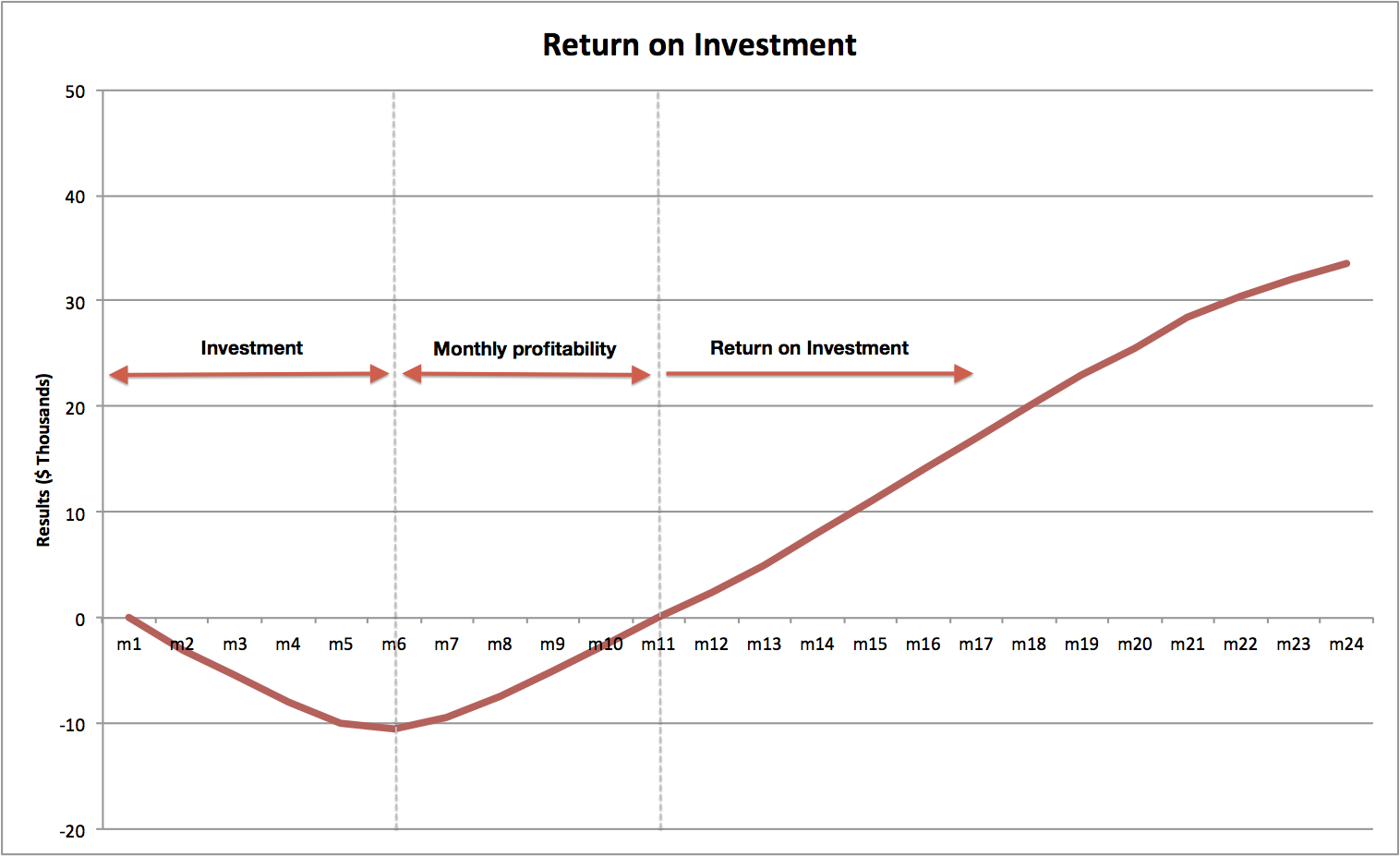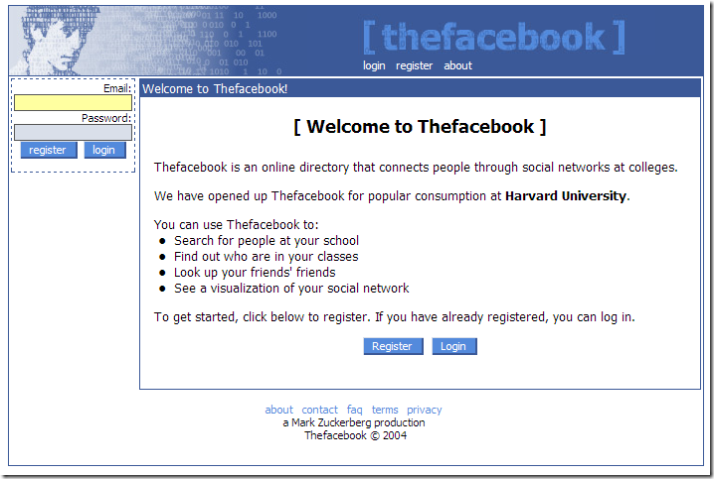This is a guest post from Joca Torres. Joca is the director of product development and product management at Locaweb, Brazil’s leader in web hosting, cloud servers and SaaS applications like email marketing and online stores, serving more than 250,000 customers. His first startup experience was in the early 1990s when he founded and ran one of the first Brazilian ISPs. He has been working with internet related software ever since.
I met Joca at Business of Software last year, and we had a great discussion on ways to monetize consumer SaaS apps. Joca recently wrote a book in Portuguese on how startups can create and manage profitable web products, and he was kind enough to translate a section of it for us. We may even convince him to translate a few more sections for us 
————————————————————————————————————————————-
I just finished writing a book in Portuguese called “The Startup Guide: how startups and established companies can create and manage profitable web products”. The book is focused on how any type of company – no matter if it’s a startup or an established company – can create and profitably manage a web software. The book is about to be published in Brazil in July or August, but I already posted all it’s content at the “Guia da Startup” blog. It’s currently in Portuguese so it’s a good opportunity for you to practice reading in a new language. If you are not up-to-date with your Portuguese skills, there’s only the option of using Google Translate. I’ll translate the content into English eventually.
One of the most popular posts from this blog is about the reasons to make fast the first version of your product. Why do we need to make an MVP? Why not wait to have the product with more features to launch it? David Cancel, VP Product at Hubspot, mentioned in his BoS 2011 presentation the famous phrase by Herb Kelleher, co-founder and former CEO of Southwest Airlines:
“We have a ‘strategic plan.’ It’s called doing things.”
David even mentioned the #jfdi hashtag which means something in the lines of “just focus and do it” or “just freakin’ do it” (polite form).
But why the hurry? Why can’t we keep working on our product until we feel comfortable it has all the features we believe are needed to solve the user’s problem?
Well, there are 3 main reasons:
Reason #1: The moment of truth!
The longer you take to put your product in front of real users, the longer you take to start getting feedback from real people to know if you’re on the right track. And what’s even worse, you’ll probably be giving too many steps in the wrong direction.
A software is supposed to solve a certain problem of its users. You will not know if you have built a good product until the product is used by real users and it actually solves one of their problems. The longer it takes for this to happen, the longer it will take for you to know if your product is or is not the solution for someone’s problem.
And if it is not, what should you do? Change, adapt and present it again to real users! The sooner you know that what you’re developing is not on track, the better, because you’ll have spent less time, energy and money moving into the wrong direction.
Reason #2: Featuritis
There’s a limit to the number of features a user can understand. When we present a software full of features to a potential user, instead of providing her with a possible solution to one of her problems, we may end up creating a new problem for her. Kathy Sierra, a well known software development and user experience instructor [editor’s note: and BoS speaker], designed the Featuritis Curve that illustrates in a clear and fun way how user satisfaction diminishes as we increase the number of features of a product.

Reason #3: ROI
The longer you take to put your product in front of real users, the longer it will take for you get some revenue and the longer you’ll have to invest from your own money or investor’s money. Below is a typical return on investment chart. While you don’t launch your product and don’t have revenue, all you’ll have are costs, i.e., you’ll be in the investment phase of the curve below. This situation will only change when you get some revenue and this revenue pays your monthly costs. This is the monthly profitability phase in the chart. Only after a few months in the monthly profitability phase you’ll be able to get to the return on investment phase. It’s a long way:

Now take a look at the chart below. If you decide to delay your launch in 3 months, this can delay your return on investment in 6 months! Are the features that you intend to implement in those 3 months you are delaying the product launch worth the 6 months delay to get to the return on investment phase?

On the other hand, if you are able to launch 3 months sooner than what’s described in the first chart, you’ll get into the return on investment phase 6 months sooner. Isn’t that worth figuring out how to launch your product faster?

If you’re not embarrassed…
There is a famous quote by Reid Hoffman, founder of LinkedIn, which really resonates with the MVP concept:
“If you are not embarrassed by the first version of your product, you’ve launched too late.”
To illustrate this quote, here are some print screens of early versions of well known software products:

Google in 1998

Twitter in 2006

Linkedin in 2005

Facebook login screen in 2005

Facebook in 2005
Next Steps
Last year I decided to run a lean startup experiment. Would it be possible to build a software and market it without using Locaweb’s marketing power? The result of this experiment is a calorie counter web product with more than 17,000 registered users in less than one year of operation. In my next post I’ll explain how I built the MVP of this product in 10 days.
Learn how great SaaS & software companies are run
We produce exceptional conferences & content that will help you build better products & companies.
Join our friendly list for event updates, ideas & inspiration.
Thanks Joca.
This is great. Strangely, I was looking for something like the Feauturitis Curve earlier today too and couldn’t find it. Looking forward to next installment and seeing you in Boston.
Hi Mark,
Thanks for publishing my post! I really like Kathy’s Featuritis Curve. I’m sorry I missed her in a previous BoS edition. I’m looking forward to the next BoS.
Great post!
I was there on kathy sierra’s presentation on BOS
You can see Kathy’s talk here: https://businessofsoftware.org/2010/05/kathy-sierra-at-business-of-software-2009/
Thanks for the link. I’m watching it right now and it was very good, full of interesting insights.
Thanks for the visual illustration of what some of the big player interfaces looked like when they started out. Really helps drive home the urgency to launch now and develop improvements each day.
Looking forward to your “MVP in 10 days”.
Hi Nikki,
In case you haven’t seen it, Joca’s post on building an MVP in 10 days can be found here: https://businessofsoftware.org/2012/07/building-an-mvp-in-10-days.
I also went ahead and added a link to it at the end of this blog post to make it easier to get to.
Thanks Zuly!